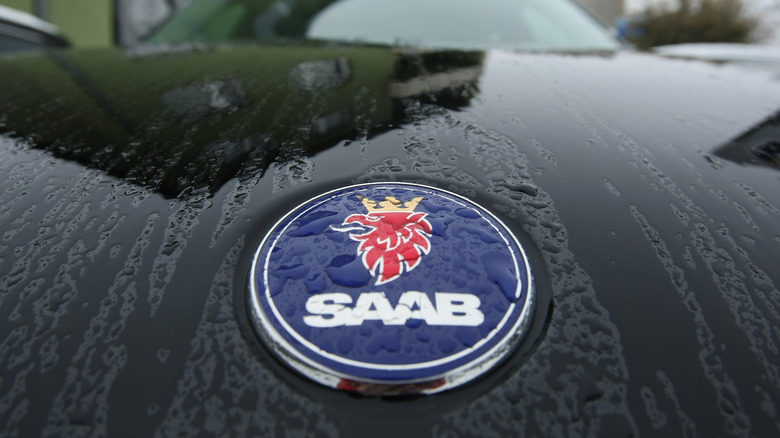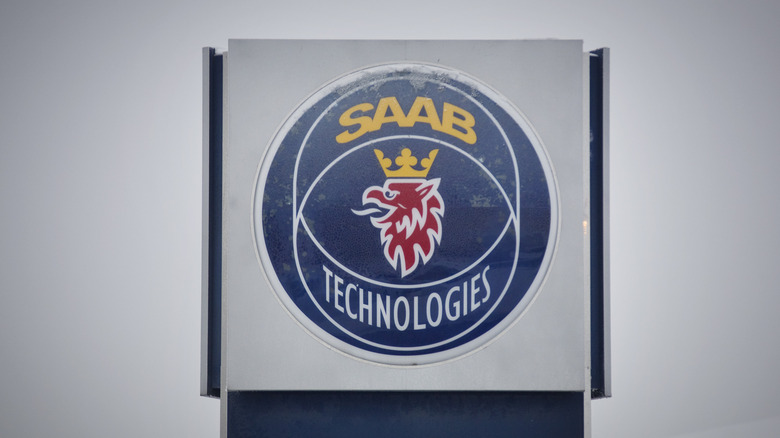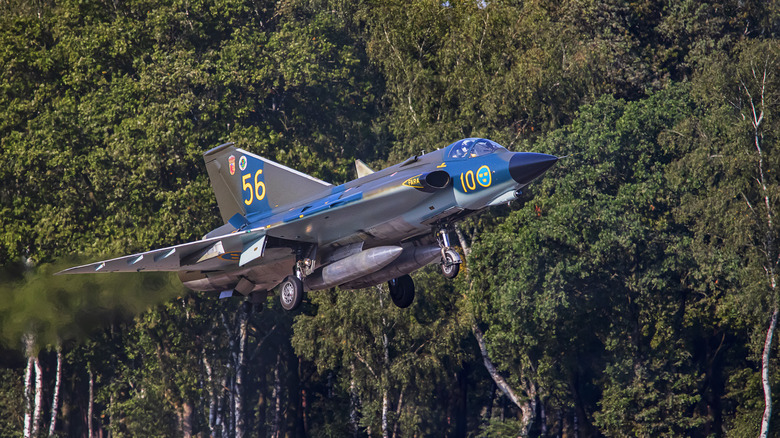How The Saab J35 Draken Excelled As A Masterpiece Of Swedish Aerial Warfare
There's a good chance that even if anyone in the United States still remembers the Swedish company Saab, they'll likely think of cars. The funny thing is, Saab doesn't make cars anymore and hasn't for over a decade. The company started as an aircraft manufacturer and has been making planes — like the J35 Draken — ever since.
In 1969, Scania-Vabis (maker of semi-trucks and busses) merged with Saab. That partnership ended in 1989, and General Motors swooped in to buy a 50% stake in Saab's Automobile division, spinning that off into a wholly-owned subsidiary in 2000.
Eight years later, the American auto industry was on the precipice of failure. In January 2010, GM sold a majority of its Saab subsidiary to Dutch sports car maker Spyker Cars. That only delayed the inevitable because, in December 2011, Saab Automobile filed for bankruptcy. General Motors still owned part of Saab but refused to accept money from Chinese investors because they didn't want its licenses or technology to fall into their hands.
One shouldn't cry for the Swedish company because cars were never really its thing. Svenska Aeroplan Aktiebolaget (Saab) followed a similar path as Bavarian Motor Works (BMW) some 25 years earlier: building warplanes. In Saab's case, it was for the Swedish Air Force just as Europe was ramping up for a second world war in 1937. Saab wouldn't start designing cars until 1945, with the first heavily influenced by its single-engine trainer, the Safir.
Planes, submarines, and tanks... oh my!
It may seem ironic that a military defense company would operate inside the borders of a country long known for its neutrality. Still, it's the "defense" part of that equation that plays such a vital role in its existence. Just because it's been neutral for over 200 years doesn't mean it's been a pushover.
Sweden managed to assume a tactical stance where it carried a big enough stick to defend itself but not quite enough firepower to invade someone. Today, it's one of the highest exporters of arms per capita, one of two European countries that domestically manufactures its Air Force's combat planes, one of four to build its Navy's submarines, and, for 30 years, its own proprietary tank (the Stridsvagn 103).
The J35 Draken (Dragon) was developed in a post-World War II era when technological jumps in military aircraft occurred at hypersonic speeds. Sweden quickly realized it needed a jet fighter that was not only capable of engaging other fighters but also tracking down high-altitude bombers when necessary.
In 1949, the Swedish Defense Material Administration sent out an RFP (request for proposals) for "Project 1200." This jet interceptor had to be sturdy, inexpensive, and easy to maintain, yet still travel faster than Mach 1.4 and use its Air Base System 90 (aka Bas 90), which consisted of special sections of reinforced public roads that planes could use as runways during times of war.
Sweden doubled down on the double-delta wing
Since Saab had previously built and supplied the Swedish Air Force with the J29 Tunnan, it made a proposal. An engineering team led by Erik Bratt began designing a plane using triangular-shaped wings referred to as delta wings because they resembled the Greek letter delta.
This shape significantly lowered drag on the wings and reduced the plane's overall weight. The delta wing was explicitly intended for subsonic or supersonic speeds.
Their initial delta-wing concept had a sweepback angle of 70 degrees, but after testing, it was ditched for a "double delta" wing, a design that had never before flown successfully. It called for a thicker inner delta angled at 80 degrees for high speeds and a thin outer delta canted at 57 degrees, which let it perform at slower speeds.
Remember, this was in a day and age before CAD (computer-aided design) software or advanced computer simulations that could safely test aerodynamics. So, teams built every prototype, ran them through wind tunnel testing, and, if approved, had test pilots fly in hopes of not dying. This process had to be done repeatedly until they finally got it right.
In January 1952, the Saab 210 (aka "Little Dragon") flew successfully, and in August 1953, three prototypes and three full-size Drakens were ordered. The first prototype took flight in October 1955 and, along with the others, tested so well that it was finally green-lit for production in 1956 as the "J35A."
This Nordic dragon breathed some serious fire
It was powered by a Svenska Flygmotor (Swedish-built) version of the Rolls-Royce Avon 200/300 RM6B/C turbojet, pushing the Draken to speeds near Mach 2. When the afterburner was engaged, it shot fire from its tail, which was so long that a pair of small wheels were installed on the underside to keep it from dragging the ground during takeoffs and landings.
During testing, pilots discovered it could perform a technically demanding maneuver that required them to pull the nose up and flatten the plane's belly against the airstream. This acted like an air brake, slowing it down immediately and briefly causing it to stall. The pilot then leveled out the plane, reengaged the engines, and continued on course.
The maneuver had no name until Soviet test pilot Viktor Pugachev performed it publically for the first time while flying a Sukhoi Su-27 at the Paris Le Bourget air show in 1989. After that, it became known as the Cobra Maneuver (or Pugachev's Cobra). And yes, it's the stunt Maverick pulls off in "Top Gun: Maverick."
Roughly 650 were built in seven different versions. The first could be fitted with two 30 mm cannons and carry four external AIM-9 Sidewinder short-range air-to-air missiles and additional internal rockets and bombs. Subsequent versions had upgraded armaments and advanced avionics like integrated radar, countermeasure equipment, and surveillance cameras.
Sweden retired the Draken in December 1998, with the last (flying with Austria) retiring in 2005.


